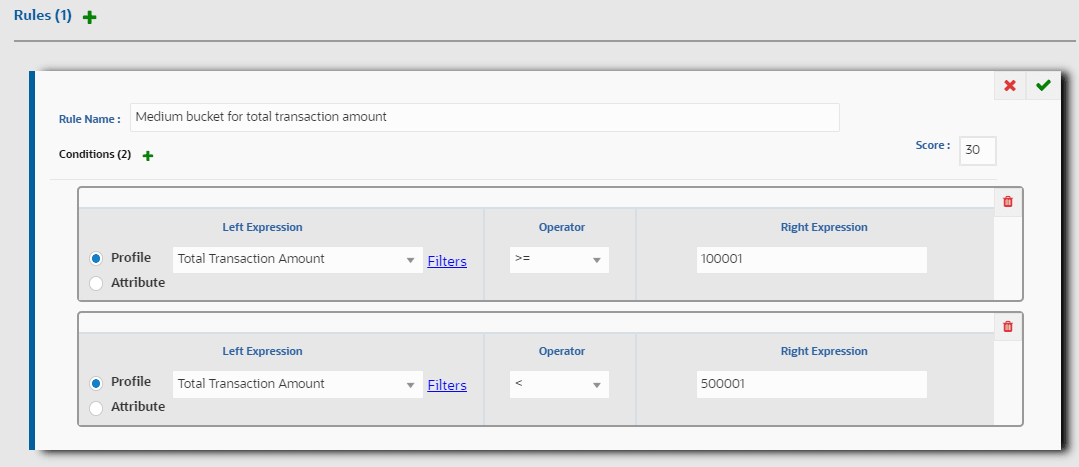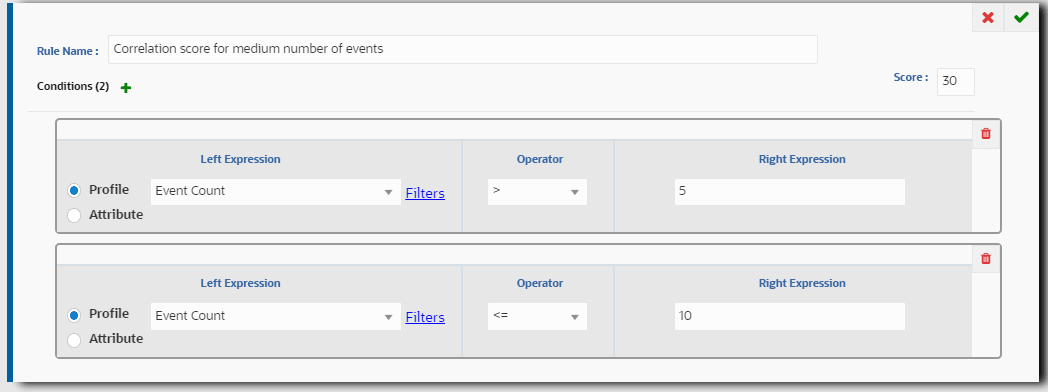Example of Correlation Scoring
Correlation Scoring use case.
In this example, the correlation scoring rule-based Event Count and Total
Transaction Amount is defined as follows:
- Correlation 1: Total Transaction Amount = 170000, Event Count =3
- Correlation 2: Total Transaction Amount = 180000, Event Count = 7
- Correlation 3: Total Transaction Amount = 50000, Event Count = 8
- Define a rule (Rule1) with the score 30 based on the following conditions:
- Conditions: Transaction Amount >= 100001 and Transaction Amount < 500001
- Result: Correlation 1 and Correlation 2 will be assigned a score as 30
- Define a rule (Rule2) with the score 50 based on the following conditions:
- Conditions: Event Count > 5 and Event Count < = 10
- Result: Correlation 2 and Correlation 3 will be assigned a score as 50.
Follow these steps to define this use case:
- Add a rule (Rule1) using Add
 from the Rules window. The Rules window is displayed.
from the Rules window. The Rules window is displayed.
- Enter the Rule Name, Description, and Score as 30.
- Define condition 1 and condition 2 as Transaction Amount
>= 100001 and Transaction Amount < 500001.
Figure 6-1 Example of Correlation Scoring – Condition 1

- Click Save
 .
.
- Add a rule (Rule2) using Add
 from the Rules window The Rules window is displayed.
from the Rules window The Rules window is displayed.
- Enter the Rule Name and Score as 50.
- Define condition 1 and condition 2 as Event Count > 5 and
Event Count < = 10
Figure 6-2 Example of Correlation Scoring – Condition 2

- Click Save
 .
.
After defining the scoring rules, the total correlation score will be calculated based on
the Score Aggregation Type. The Score Aggregation Types are described in the following
table.
Table 6-8 Score Aggregation Types
| Aggregation Type | Correlation 1 | Correlation 2 | Correlation 3 |
|---|---|---|---|
| SUM | 30 | 30+50=80 | 50 |
| MIN | 30 | 30 | 50 |
| MAX | 30 | 50 | 50 |